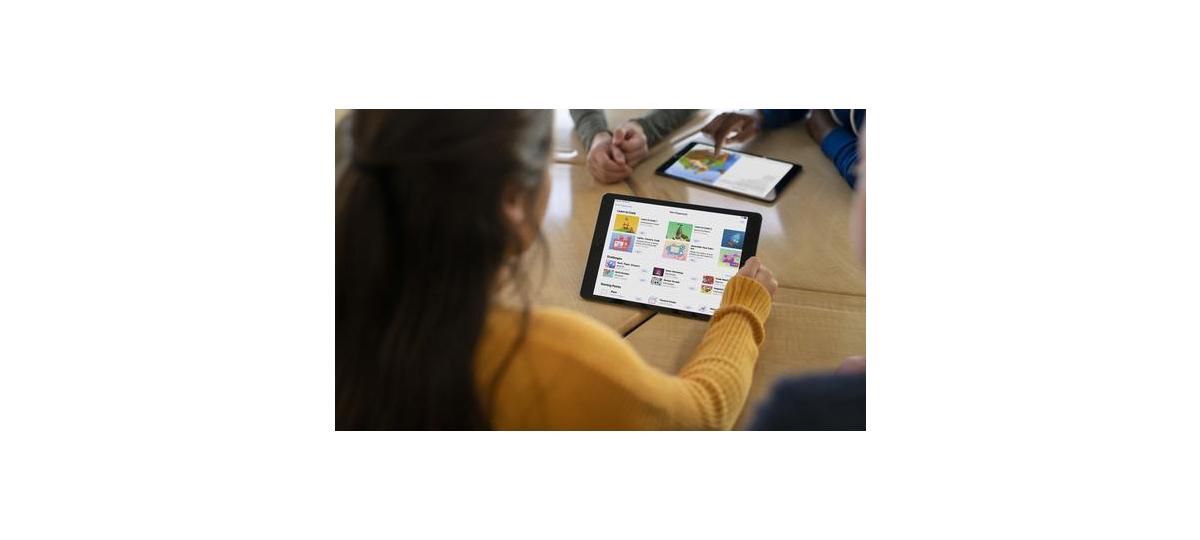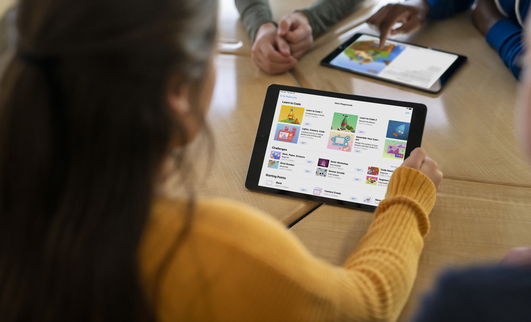
Supporting STEAM learning with iPad
Science, Technology, Engineering, Art and Maths can be glued together in a meaningful way to enhance learning. It’s exciting for teachers and learners to embed ongoing projects that centre around an engaging theme. Not only does STEAM make useful links between subjects, but it also reflects the working world. In most jobs, creative problem solving through a variety of skills is essential, and it’s fair to say that technology can often be the catalyst. We might explore ideas, track progress, research, or create things from scratch using technology. The iPad in the hands of a learner can therefore be a powerful tool as they navigate their way through a STEAM activity.
In this blog, I am going to highlight the different ways educational apps can be weaved in and out of a project. Apple Pages will be the centerpiece of an 'Automated Electric Car' activity. As my fictional class engages with science, technology, engineering, art, and math, they will compile their work on Pages using an extremely useful template that is built into the app called ‘Visual Textbook’. I’ll highlight some free apps and approaches for each subject that will enhance the project, and you’ll be able to use any of these ideas in isolation or as one big STEAM activity.
Science
Why do we need electric cars? This is the first question that needs answering before the project can really get going. So, allow me to introduce CO2 AR. This free app places an augmented reality globe in the room. Learners can then scroll through the years and see how CO2 emissions have risen over time. They can also see which countries are producing the most and, crucially, which countries are producing the least. If you want to scare the class, you can also look into the future at projected levels and see how those effect global temperatures. As a jumping-off point, this app provides a great conversation starter that can be bolstered by some extra internet research on the Safari app. Likewise, it can be the starting point for practical experiments that are captured on the iPad camera. Screenshots of the CO2 AR app, videos of experiments, and rewritten research can make up the first page in the classes visual textbook. In doing so, the class should be one step closer to answering the question - Why do we need electric cars?
Technology
Word processing, formatting, internet research, digital design, and so on will fall naturally into this project. So, on the technology side, I would suggest that programming and coding take centre stage. Using a Tesla as an example, we can highlight how self-driven cars could potentially increase efficiency and therefore reduce the amount of charging needed for an electric car. Less charging means less emissions. However, the programming involved in a self-driving car is complex, (to say the least). The ALEX app is a good way of introducing how algorithms can instruct an object to move from A to B. It’s also a great tool for highlighting how bugs can be ‘de-bugged’. When we compare the movements or obstacles on each ALEX level (which increase in difficulty as they go) to the complexities of a self-driven car, this should highlight how much programming is needed in automated vehicles. The class could begin to think about variables and how sensors on a Tesla need to process input to select the correct output. All this brilliant coding terminology can be explored via the app and the theme of electric automatic cars. Again, the findings can be screenshots and inserted into the Pages workbook.


Enginnering
Getting stuck in and beginning to build something is ultimately a practical exercise. However, the iPad can be an active part of this. For example, many apps can scan a pile of Lego and produce instructions for different builds (like Brickit App). Or an app can help to inspire a design. AR Real Driving is an app that can plonk a to-scale car in the classroom via augmented reality. The learners can then drive the car around the room. On top of that, they can reverse the car into a position that makes it easy for them to look at the engine. As the class begin to think about creating their own cars, they could use this app to help them visualise their design. Using Brickit to build an adapt a car design is a brilliant way of getting hands on. And of course, any physical builds can be captured via the iPad’s camera at various stages as it progresses, and these elements can be a part of another page in the classes’ digital workbook. Let’s not forget that the iPad also gives individual learners the opportunity to expand on any of the activities I am suggesting. Some may like to investigate manufacturing lines on YouTube Kids or do more research into the engineering process.
Art
When it comes to car manufacturing, models inform designs and vice-versa. So, you could swap around the Art and Engineering part of this project, or you could meld them together even more if you wish. There are many artistic apps that can aid learners to create digital designs. I am going to highlight Sketchbook, but I would also recommend, Tayasui Sketches, SketchUp, Brushes or even simply using the Markup Tools on the Notes app. Depending on the year group you’re working with, these different apps are a fair range from complicated to straightforward. Sketchbook sits nicely in the middle. Learners can use the simple tools to design their Electric Cars. They can use block shapes or free draw. In either case, they can fill in areas with blocks of colours to easily see what their designs look like with different finishes. Text Boxes can be added to label the designs and learners can even insert pictures of other cars to help them as they go. The finished product can be saved as a photo on the iPad’s camera roll and so it’s then easy to drop the design on the engineering page of the ongoing workbook.
Maths
To go full circle, the mathematical part of this project will focus in on how much of a difference our fictional electric car might make next to a traditional petrol car in terms of emissions. Therefore, the class will explore data capturing and measuring distances. Using Apple Maps the class can look at a journey from the school to a nearby recognisable landmark. They can also see how much time it will take a car to travel from A to B. Using this data, it’s then easy to compare petrol and electric car Co2 emissions on websites such as ‘My Climate’. From there all these numbers could be plumbed into the Numbers app. Numbers is an app for creating tables and analysing data. Bar charts, line graphs, pie charts etc can all be generated on the app. Outside of Numbers, the simple calculator on the iPad could help learners to convert into percentages or find the differences between Electric Car emissions and Petrol emissions. Numbers, Pages and Keynote are the three main Apple productivity apps. As such, they are particularly compatible. It’s super easy to get the data tables and charts from numbers into the Pages project
Like all good projects, your hope is that the learning exceeds the sum of its parts. In other words, the Pages workbook will showcase the bare minimum of the lesson objectives. As I highlighted previously, blending these subjects in a subtle but meaningful way should emphasise that learning is not conducted in a vacuum. It should show the class that they will need a working knowledge of many different things in any given job. Most of all, STEAM projects aim to convey how much more fun it is to be involved in every aspect, rather than falling back on one subject all the time. Outside of the STEAM elements of this project, you could link to other areas of the curriculum like literacy, wellbeing, economics, politics, geography, business studies etc. As STEM or STEAM becomes more prevalent in the curriculum, we would recommend that every school starts to explore the possibilities that come with this blended approach.
We can absolutely help in this regard. Select offer bespoke training that could entirely focus on STEAM and/or STEM. If you’re not sure where to start then please don’t hesitate to get in touch. One training session with us will set you up for an exciting new world of learning and teaching opportunities.




